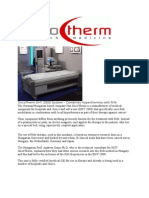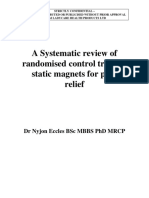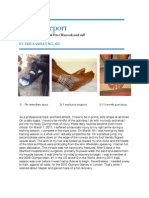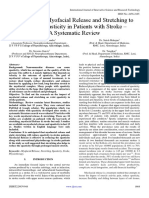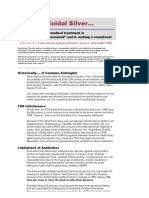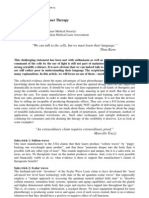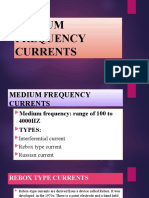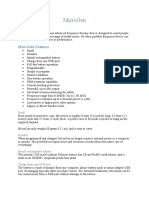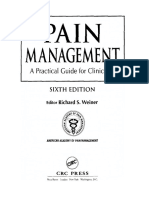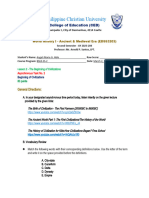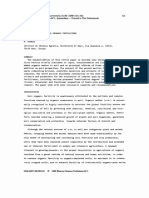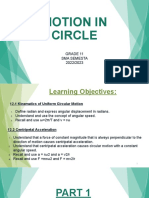0% found this document useful (0 votes)
57 views3 pagesMAGNETHOTHERAPY
Magnetotherapy is an alternative medicine that utilizes magnetic fields for healing, commonly used in physiotherapy for pain relief and tissue regeneration. It involves various types of magnetic stimulation, including static magnets and transcranial magnetic stimulation (TMS), which have physiological effects on cells, nerves, circulation, and bone health. Therapeutic applications include pain management, neurological disorders, and improving circulatory health, although there are contraindications such as pregnancy and the presence of pacemakers.
Uploaded by
mussenda98Copyright
© © All Rights Reserved
We take content rights seriously. If you suspect this is your content, claim it here.
Available Formats
Download as PDF, TXT or read online on Scribd
0% found this document useful (0 votes)
57 views3 pagesMAGNETHOTHERAPY
Magnetotherapy is an alternative medicine that utilizes magnetic fields for healing, commonly used in physiotherapy for pain relief and tissue regeneration. It involves various types of magnetic stimulation, including static magnets and transcranial magnetic stimulation (TMS), which have physiological effects on cells, nerves, circulation, and bone health. Therapeutic applications include pain management, neurological disorders, and improving circulatory health, although there are contraindications such as pregnancy and the presence of pacemakers.
Uploaded by
mussenda98Copyright
© © All Rights Reserved
We take content rights seriously. If you suspect this is your content, claim it here.
Available Formats
Download as PDF, TXT or read online on Scribd
/ 3













